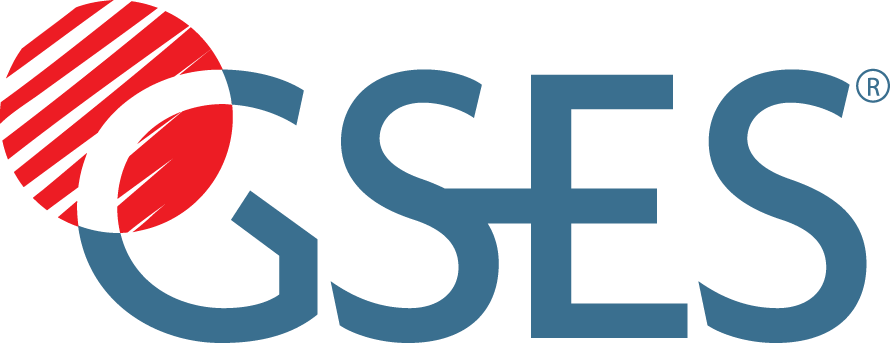The 2020 updates to the inverter Standard AS/NZS 4777.2 Grid connection of energy systems via inverters, Part 2: Inverter Requirements is now available.
If you’re a solar professional, you’re probably familiar with the 2015 version of the Standard. In December 2020, the Standard was updated to reflect changing conditions in the industry. These changes could affect your business, so knowledge is key to minimise risk before transitioning to the updated version.
In December 2021, all new inverters in Australia and New Zealand will need to be certified to AS/NZS 4777.2:2020. We’ve gone through the updates ourselves and boiled it down to the key changes for you. The updated version of the Standard can be purchased from Standards Australia or SAI Global.
What’s new in the 2020 Inverter standard?
To begin with, the updated Standard is much longer than the previous version. It’s now 143 pages, rather than 81. In addition, several old clauses have been rewritten or restructured, meaning the Standard has changed significantly.
Why are these changes necessary? In short, the revised Standard aims to address these key issues, which were not adequately addressed in the previous version:
- Grid security concerns, specifically related to increased penetration of solar PV systems
- Grid connection requirements
- Inverter testing and test templates
- Energy storage
- Standalone power systems
- Electric vehicles
- Quality of life improvements
The changes largely affect inverter manufacturers, as well as PV designers and installers in the commercial and industrial (C&I) space. Connection application managers, battery inverter and electric vehicle (EV) manufacturers, and those working on residential systems are also affected.
1. Grid Security/Power Quality in 4777.2 2020

Likely to affect: Inverter manufacturers, PV installers and designers (C&I), connection application managers, distribution network service providers (DNSPs)
The main goal of AS/NZS4777.2:2020 is to address grid security and power quality concerns. As nationwide solar capacity increases, network operators will struggle to keep grids stable. To address this, new requirements have been introduced for the power quality response modes and passive anti-islanding requirements of inverters.
Updated Inverter Setpoints:
- Volt-Var response mode (Clause 3.3.2)
- Volt-Watt response mode (Clause 3.3.2)
- Passive anti-islanding voltage limits (Clause 4.4)
- Passive anti-islanding frequency limits (Clause 4.4)
- Sustained operation limits for voltage variations (Clause 4.5.2)
- Sustained operation limits for frequency variations (Clause 4.5.3)
Why have these setpoints changed?:
- To provide a staggered response to transmission-level events, so inverter systems can stay connected to the grid in these cases.
- To adequately protect distribution networks from islanding.
These values are commonly referenced during C&I network applications and will need to satisfy AS/NZS 4777.2:2020 setpoints. Anyone managing connection applications will need to be aware of the updated values.
Inverter Manufacturers
Inverters installed in Australia and New Zealand from December 2021 will need to be capable of operating per these setpoints. Inverter manufacturers will need to ensure their inverters comply with the updated Standard prior to the transition date. There is a chance that some inverters will become non-compliant if they cannot operate according to these setpoints, meaning they could not be legally installed in Australia or New Zealand until compliance is demonstrated. PV designers & installers will need to ensure inverters in their systems will be compliant at the date of installation. The easiest method will be via the CEC’s Approved Inverters list, which will be updated once AS/NZS 4777.2:2020 comes into full effect.
Setpoints are now defined by region of installation, as per the following categories:
- Australia A: For large interconnected power systems, e.g. all Australian networks other than those specified below
- Australia B: For small interconnected power systems, e.g. Western Power
- Australia C: For isolated or remote power systems e.g. Horizon Power and TasNetworks
- New Zealand: All systems in New Zealand
With network applications, there may be different setpoints required for different projects (depending on the locations of each). As the Standard does not explicitly define the difference between large and small interconnected systems, network operators (DNSPs) will decide which regions their networks fall under. As such, following the transition to AS/NZS 4777.2:2020, DNSP documentation (i.e. the connection agreement) should be checked to confirm the preferred setpoints for each network. It is strongly recommended that system designers and connection application managers make themselves aware of all setpoint requirements prior to December 2021.
Changes to Energy Storage, Standalone Systems, and Electric Vehicles in 4777.2:2020

Likely to affect: PV/battery designers and installers (all); Battery inverter and EV manufacturers
A significant effort has gone into future-proofing this Standard, with dozens of new references to energy storage, standalone systems, and electric vehicles being introduced.
The authors have clarified that this Standard applies to electric vehicles exporting energy to the grid. The Standard’s definitions and references (Clauses 1.4 and 1.3 respectively) have been updated to accommodate this. Additionally, Clauses 2.3.1 and 2.3.3.2 now specify requirements around external connections for EVs. These will be an issue for EV system manufacturers and installers to address). The changes are likely to play a significant role in the future, as EVs become more prominent. PV/battery system designers will also need to be aware of the new requirements, as they may impact system design requirements in the future.
Stand Alone Power Systems (SAPS) in AS/NZS 4777.2 2020
A significant change is Section 2.4.2, which introduces new requirements for earth fault alarms on multimode inverters. According to this new clause,
“Where an inverter has a port for connecting a battery system installation that requires an alarm for monitoring of earth faults in conformance to AS/NZS 5139, the inverter should provide an alarm. Where no alarm is provided in the inverter, the inverter documentation shall require the addition of an external alarm and monitoring device.”
This clause will have implications for multimode/battery inverter manufacturers and installers. Installers of these inverters should be aware of any fault alarm capabilities of the inverters they’re installing, as they will need to install an external alarm and monitoring device if not.

3. Export/Generation Limitation

Likely to affect: PV designers and installers (all), connection application managers, distribution network service providers (DNSPs)
There are now formal definitions around generation and export limits of inverters. Both soft and hard limits are defined, and requirements for both are explored throughout the Standard.
Another concept that was already common in grid-connected projects, but was not formally defined in the Standard until now. This change is likely to have implications for systems with limits on export or generation, as these systems will now need to comply with the requirements introduced in Clauses 6.2 and 6.3 as a minimum.
For generation limit control (Clause 6.2), inverters will need to shut down within:
- 15 seconds if the soft limit is exceeded, OR
- 5 seconds if the hard limit is exceeded for at least 15 seconds continuously
For export limit control (Clause 6.3), inverters will need to shut down within:
- 15 seconds if the soft limit exceeded, OR
- 5 seconds if the hard limit is exceeded
These changes are likely to have a broad impact on the industry, as export limits on PV systems are becoming increasingly common. However, similar limits were already imposed on most generation and export-limited systems, so these updated definitions are likely to have limited effect. These are most likely to affect system designers and installers, as well as DNSPs and connection application managers. However, potential issues associated with these changes can be addressed by noting the requirements discussed above.
4. Installation and Documentation

Likely to affect: Inverter manufacturers
The new updates to AS4777.2 introduce new requirements around inverter marking and documentation. Many of these (e.g. marking requirements in Table 7.1) are minor, and reflect this standard’s new emphasis on grid stability and energy storage. One major note is that several new ratings are required for inverters containing isolating devices, as per Clause 7.3.3. These will need to be addressed by inverter manufacturers, and could potentially cause inverters to become non-compliant if documentation is not updated to include these ratings.
There are also new requirements around firmware documentation in Clause 7.3.8, which states:
“The documentation shall provide instructions for viewing of the inverter firmware version and the selected regional settings and any variations to the default inverter settings in read-only mode. This is to prevent unauthorized modification of inverter settings. Documentation on the initial configuration and selection of regional settings and other settings at commissioning shall be provided to authorized persons. Restricted information on accessing and changing the regional settings, other settings and firmware after initial configuration shall be provided to authorized persons only.”
Inverter manufacturers & installers should consider this, as all relevant details will need to be supplied with the inverter itself.
5. General Changes

Likely to affect: PV designers, inverter manufacturers, connection application managers
Some changes will have ongoing implications for PV systems, but don’t fall into the categories listed above. Below are some of the more interesting ones. Note that these are not likely to have significant impacts, but it is still valuable to be aware of them.
- As per Clause 5.2, current imbalance on multiphase systems can now exceed 5kVA (21.7A) per phase for up to 15 seconds. This is only a minor change from the previous version of this requirement (which didn’t have the 15-second limit). However, it may still have some implications during system design.
- As per Clause 2.6, all inverters will need to be able to absorb or supply reactive power in line with power quality response modes (e.g. volt-var, volt-watt). This will need to be addressed by inverter manufacturers prior to the transition to the new version of the Standard.
- In addition to the modification of existing settings, Rate Of Change Of Frequency (ROCOF) is now explicitly defined in AS/NZS 4777.2:2020 (Clause 4.5.6). This was a common restriction imposed by DNSPs during network applications, but until now has not been defined in the Standard itself. Now, the withstand limit for ROCOF is limited to ±4Hz/s over a duration of 0.25s. This means that inverters will respond to network conditions at or above this value. This must be considered by system designers and those managing network connection applications. Additionally, further limits may be imposed by DNSPs to ensure network stability.
Conclusion
The 2020 update to AS/NZS 4777.2 is significant, and will become mandatory in December 2021. This should ensure that distributed energy resources will better manage the grid during peak generation periods. PV industry professionals must become familiar with the changes to minimise the impact of the transition to AS/NZS 4777.2:2020.
In particular, the following groups are likely to be the most affected by the updates to the Standard:
- Inverter manufacturers. Inverter manufacturers are likely to be the most affected by the changes to AS/NZS4777.2. They will need to ensure that all inverters comply with all new power quality response mode and anti-islanding settings. Manufacturers can be affected by updated requirements around energy storage. And they will need to update system documentation to meet all new requirements.
- PV/battery designers and installers: Affected by similar issues as inverter manufacturers, with less affected by updated inverter documentation.
- Connection application managers: Affected in largely the same way as PV/battery designers.
- Network operators (DNSPs): Be aware of new requirements, and dictate the network type as per categories Australia A, Australia B, etc.


